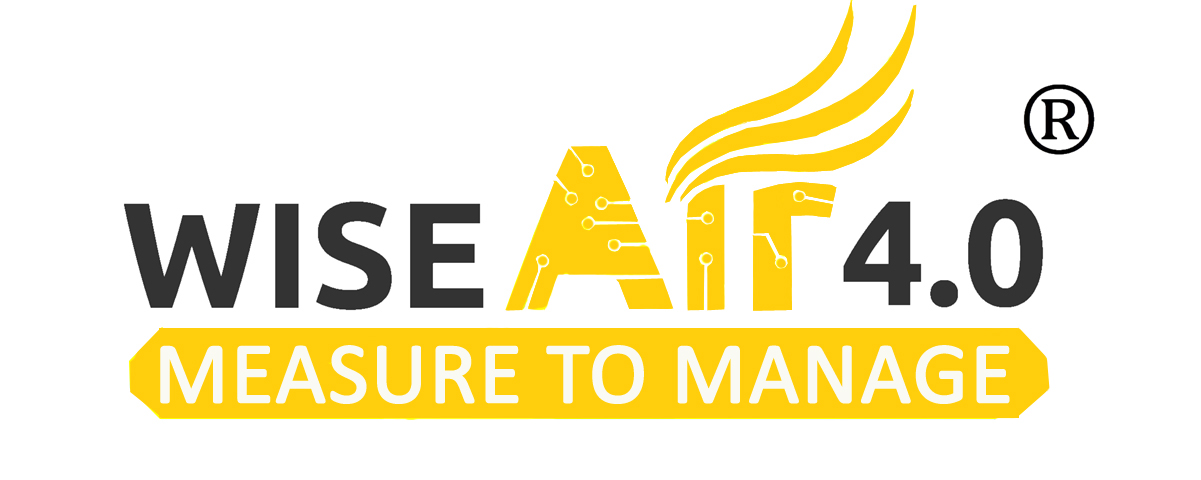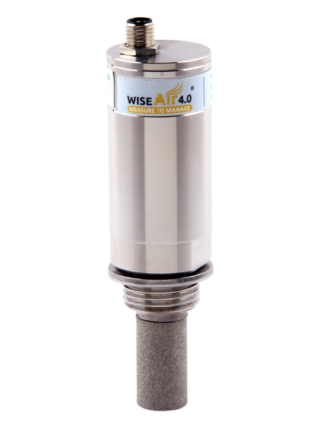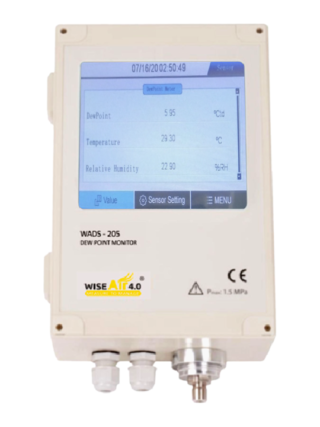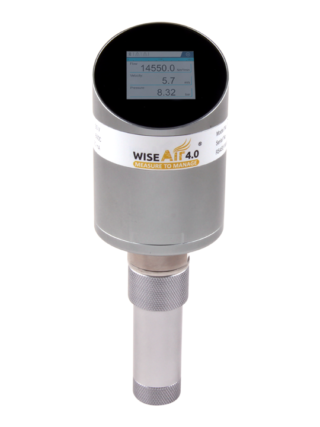Principle Of Dew Point Measurement

Dew Point is the Temperature to Which Air Can be Cooled Down without Condensation. Dew Point is Pressure Dependent and Would Change when Air is Compressed.
The Term “pressure dew point” is encountered when measuring the dew point temperature of gases at pressures higher than atmospheric pressure. It refers to the dew point temperature of a gas under pressure. This is important because changing the pressure of a gas increases the dew point temperature of the gas. Consider an example of air at atmospheric pressure of 1013.3 mbar with a dew point temperature of -10C. The partial pressure of water vapour (designated by the symbol “e”) in this case is 2.8 mbar. If this air is compressed and the total pressure is doubled to 2026.6 mbar, then according to Dalton’s law, the partial pressure of water vapour, e, is also doubled to the value of 5.6 mbar. The dew point temperature corresponding to 5.6 mbar is approximately -1C, so it is clear that increasing the pressure of the air has also increased the dew point temperature of the air. Conversely, expanding a compressed gas to atmospheric pressure decreases the partial pressures of all of the component gases, including water vapour, and therefore decreases the dew point temperature of the gas. The relationship of total pressure to the partial pressure of water vapour, can be expressed as follows,
P1/P2 – e1/e2
By converting dew point temperature to the corresponding saturation vapour pressure, it is easy to calculate the effect of changing total pressure on the saturation vapour pressure. The New saturation vapour pressure value can then be converted back to the corresponding dew point temperature. These calculations can be done manually using tables, or performed by various kinds of software.
How is dew point in compressed air reliably measured?
- Select an instrument with the correct measuring range: Some instruments are suitable for measuring high dew points, but not low dew points. Similarly, some instruments are suitable for very low dew points but are compromised when exposed to high dew points.
- Understand the pressure characteristics of the dew point instrument: Some instruments are not suitable for use at process pressure. They can be installed to measure compressed air after it is expanded to atmospheric pressure, but the measured dew point value will have to be corrected if pressure dew point is the desired measurement parameter.
- Install the sensor correctly: Follow instructions from the manufacturer. Do not install dew point sensors at the end of stubs or other “dead end” pieces of pipe where there is no airflow.
Importance Of Monitoring Dew Point
Effect Of Pressure On Dew Point
Increasing the pressure of a gas increases the dew point temperature of the gas. Consider an example of air at atmospheric pressure of 1013.3 mbar with a dew point temperature of -10 °C (14 °F). From the table above, the partial pressure of water vapour (designated by the symbol “e”) is 2.8 mbar. If this air is compressed and the total pressure is doubled to 2026.6 mbar, then according to Dalton’s law, the partial pressure of water vapour, e, is also doubled to the value of 5.6 mbar. The dew point temperature corresponding to 5.6 mbar is approximately -1 °C (30 °F), so it is clear that increasing the pressure of the air has also increased the dew point temperature of the air. Conversely, expanding a compressed gas to atmospheric pressure decreases the partial pressures of all of the component gases, including water vapour, and therefore decreases the dew point temperature of the gas. The relationship of total pressure to the partial pressure of water vapour, e, can be expressed as follows:
P1/P2 – e1/e2
By converting dew point temperature to the corresponding saturation vapour pressure, it is easy to calculate the effect of changing total pressure on the saturation vapour pressure. The new saturation vapour pressure value can then be converted back to the corresponding dew point temperature. These calculations can be done manually using tables, or performed by various kinds of software.
Why Is Knowledge Of Dew Point In Compressed Air Important?
The importance of dew point temperature in compressed air depends on the intended use of the air. In many cases dew point is not critical (portable compressors for pneumatic tools, gas station tire filling systems, etc.). In some cases, dew point is important only because the pipes that carry the air are exposed to freezing temperatures, where a high dew point could result in freezing and blockage of the pipes. In many modern factories, compressed air is used to operate a variety of equipment, some of which may malfunction if condensation forms on internal parts. Certain water sensitive processes (e.g.) paint spraying) that require compressed air may have specific dryness specifications. Finally, medical and pharmaceutical processes may treat water vapour and other gases as contaminants, requiring a very high level of purity.
Typical Range Of Dew Point Temperatures To Be Found In Compressed Air
Dew point temperatures in compressed air range from ambient down to -80 °C (-112 °F), sometimes lower in special cases. Compressor systems without air drying capability tend to produce compressed air that is saturated at ambient temperature. Systems with refrigerant dryers pass the compressed air through some sort of cooled heat exchanger, causing water to condense out of the air stream. These systems typically produce air with a dew point no lower than 5 °C (41°F). Desiccant drying systems absorb water vapour from the air stream and can produce air with a dew point of -40 °C (-40 °F) and drier if required.
WISEAIR TECHNOLOGIES INDIA LLP
# 12 Sri Venkatalakshmi Nagar, Singanallur,
Coimbatore – 641005 India.
WISEAIR TECHNOLOGIES EUROPE ApS
Pilestraede 58, 112 Copenhagen,
Denmark
© Copyright 2022. WiseAir Technologies India LLP





